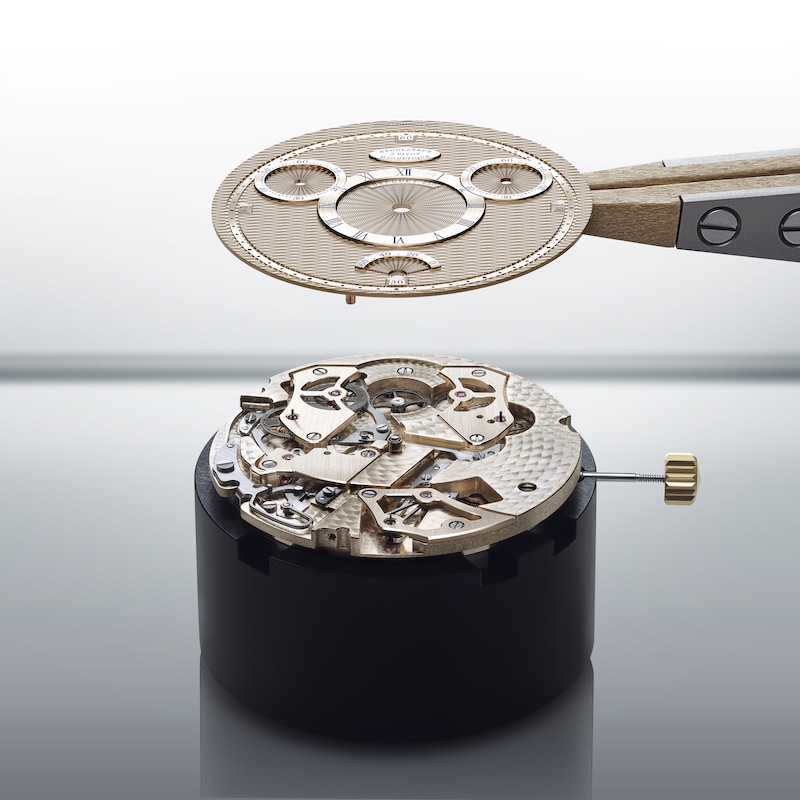Classique 7225
Collections ,

In 1802, Abraham-Louis Breguet undertook construction of a series of five timepieces featuring several devices designed to improve precision, in particular a tourbillon associated to natural escapement. These creations represented the pinnacle of what the master watchmaker could offer his clients in terms of timekeeping.
Today, as part of its 250th anniversary celebrations, Manufacture Breguet is continuing this tradition by announcing the Classique 7225, equipped with a magnetic-pivot balance and a high-frequency escapement (10 Hz).
New chronometric momentum
The ultimate quest for precision is not the result of a single approach, but rather of several combined devices, as A.-L. Breguet well understood. The great watchmaker himself conducted numerous experiments, ranging from purely mechanical parameters – rotation speeds, frequencies, types of escapement – to more transversal aspects such as the materials and lubricants used.
With hindsight, it is clear that certain advances proved decisive and endured across the centuries. This is naturally the case with the tourbillon patented by Breguet in 1801, as well as the constant-force fusee-and-chain mechanism that now equips the flagship model of the Tradition collection.
Nonetheless, very few developments have focused on high frequency, despite the fact that it enables enabling greater accuracy and rapid recovery from rating anomalies. On the one hand, this is because the very principle of the pocket watch (always in the same position, almost immune from disruptive movements) did not require it.
On the other hand, it results from the fact that the technical means available in the late 18th century did not yet enable progress in this direction, as the prerequisites for achieving higher frequencies (a more reliable escapement and sufficient power reserve) had not yet been met. The first high-frequency timepiece thus appeared on a Breguet wristwatch in 2008.
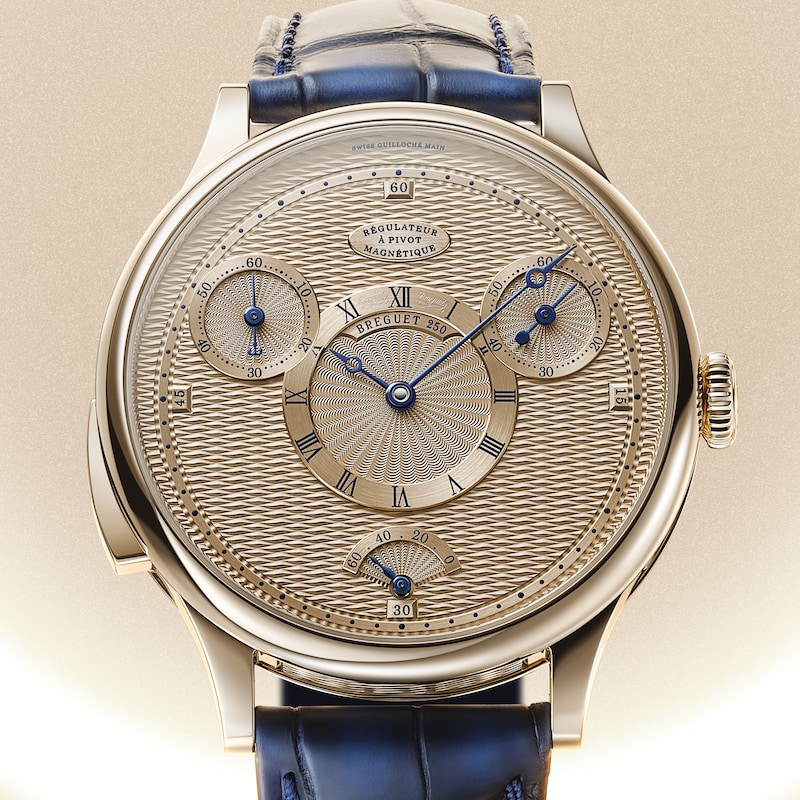
The quest for precision gets a fresh boost
Today, the essential watch components are perfectly well-mastered in terms of production processes, finishing, lubrication and quality control. Systems’ available power and reliability have reached a level such that power reserves now last several days. The Classique 7225 is therefore taking up the torch carried by A.-L. Breguet and once again setting out to conquer the peak of precision via the high-frequency “slope” or angle.
Manufacture Breguet has been working on this subject since the mid-2000s and on 9 November 2010, a patent was filed for the magnetic pivot. Reflecting the true Breguet spirit, its principle is particularly audacious: aiming to master the movement’s hitherto sworn enemy – magnetism – within its very heart.
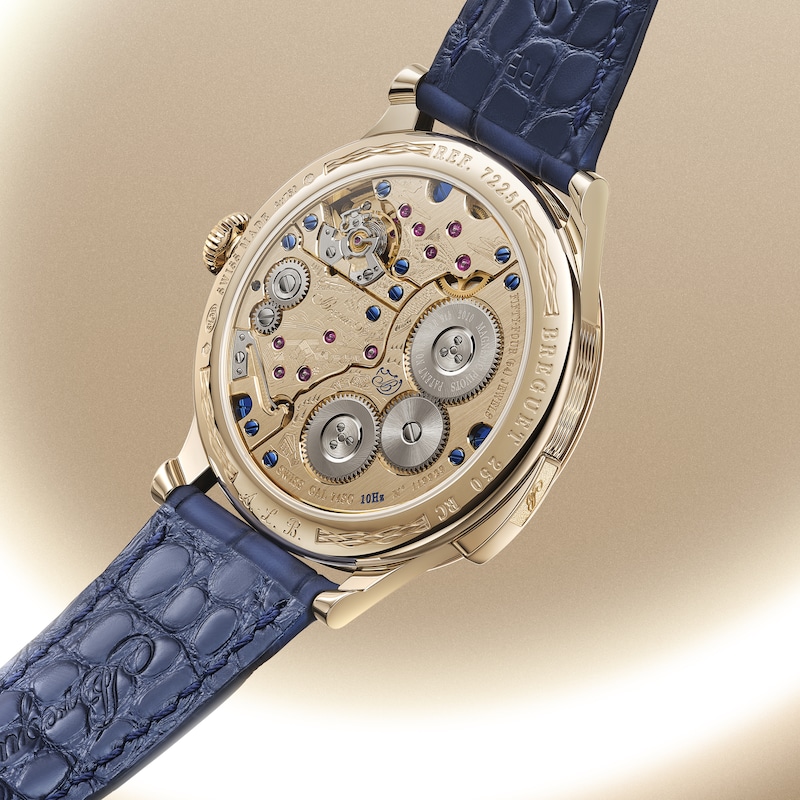
How does the magnetic pivot work?
Once despised for its tendency to disrupt the smooth running of a calibre’s regulating organ, magnetism is now harnessed and confined to a useful purpose. The goal is to maintain a stable pivot through the magnetic field generated between two magnets, freeing its pivoting action from the effects of gravity.
A micro-magnet is placed on either side of the balance-staff and together they create an intense magnetic flux inside the shaft. A subtle, deliberate imbalance in the flux keeps one end of the shaft in constant contact with its endstone. In the event of an impact, the magnetic forces automatically re-centre the shaft.
The power of the device is undeniable: while watchmakers strive to eliminate every last microtesla (µT) from the movement, the magnetic pivot safely employs two micro-magnets with a remanence of around 1.3 T (13’000 gauss). The result is a balance staff offering unprecedented stability in amplitude.
A standard balance-staff oscillates by pivoting in jewels. In the watch’s four vertical positions (designated by the crown’s position referred to as “vertical left, right, up and down”), frictional forces are accentuated by the weight of the balance-staff, which swivels on the side of its pivot inside the jewel.
These forces are however also present and accentuated by the weight of the balance in the two horizontal positions (“horizontal up and down”).

In the case of the magnetic pivot, frictional forces are low because only the tip of the axis pivots against a jewel, on a minimal surface area (compared to the sides of the pivot) and under nearly identical conditions in all six positions. This represents a major improvement in the average rate across the six positions.
Representing a first in more than two centuries of watchmaking R&D, this result was unanimously acclaimed upon its release. By using two endstones incorporating a micro-magnet at each end of the balance-staff, Breguet has designed a dynamically stable system that centres and adjusts itself.
The House first implemented this in its Classique Chronométrie 7727 with its 10 Hz frequency. It was immediately awarded the supreme distinction of the Grand Prix d’Horlogerie de Genève (GPHG): the 2014 “Aiguille d’Or”. Available in white or rose gold, this watch is now an iconic model within the Classique collection.
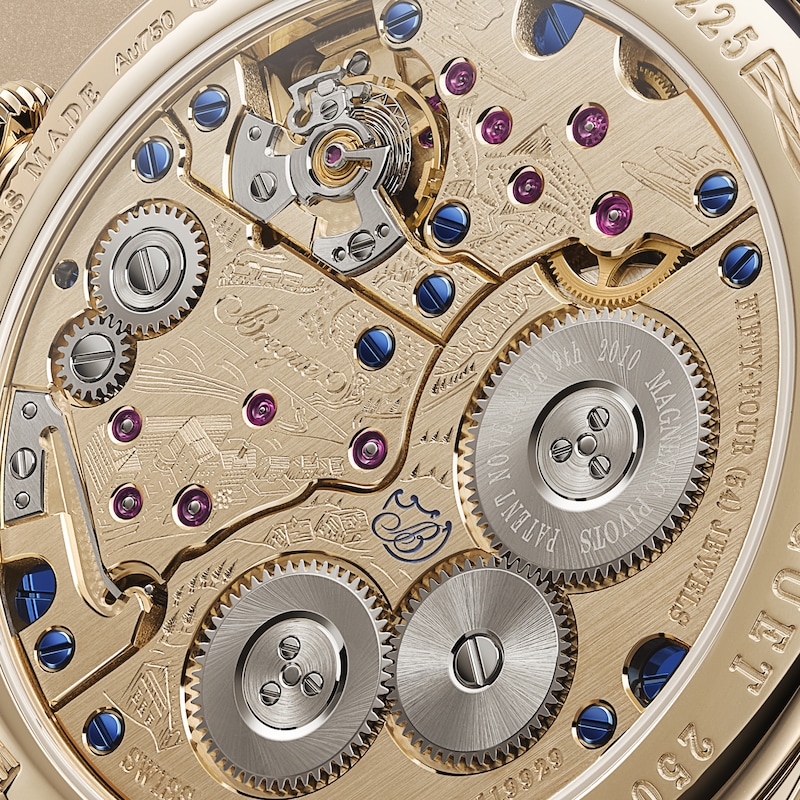
Breguet Classique 7225, heritage in motion
For its 250th anniversary, Manufacture Breguet presents a new interpretation of its magnetic pivot combined with its high-frequency escapement, inspired by the remarkable design of a timepiece built between 1802 and 1809: the Breguet No. 1176. This creation is unique in many ways.
Technically, it was one of the first four watches equipped with a four-minute tourbillon, and only the fifth tourbillon watch ever sold by the master. This exceptional piece also featured a constant-force escapement using a fusee-and-chain mechanism. Historically, it belongs to a remarkable lineage of five four-minute tourbillon watches, all sold to prestigious clients of the Quai de l’Horloge. Two examples are held at the Museum of Islamic Art in Jerusalem, alongside the legendary “Marie-Antoinette” pocket watch. Two others are part of the Breguet Museum’s collections.
The remaining two pieces were once owned respectively by King George III (1738–1820) and an Ottoman prince, while another example is now in private hands. No. 1176 was delivered to Count Potocki, a member of a distinguished Polish aristocratic family.
Today, it is preserved in the Breguet Museum in Paris as one of its most exceptional pieces. It is this timepiece that inspired the Classique 7225. The original featured a constant-force tourbillon already providing exceptional chronometric performance.
Its strikingly bold dial also featured two small seconds, one of which—on the right—could be started and stopped on demand. The Classique 7225 carries on this legacy with its magnetic pivot, clearly visible through the sapphire caseback of its 41 mm Breguet gold case.
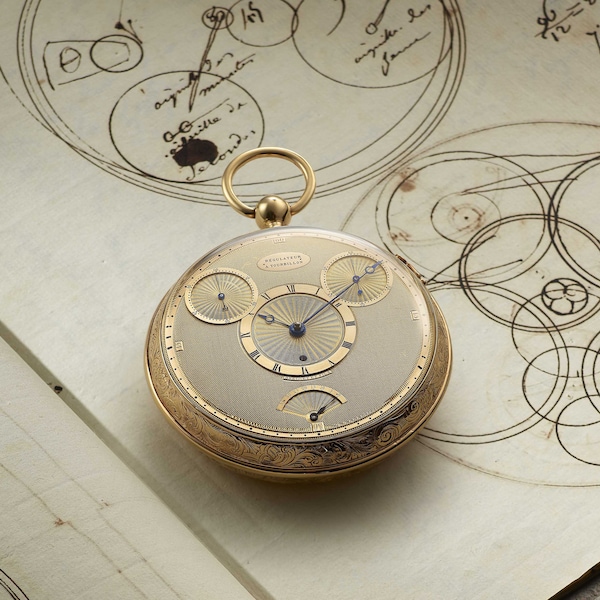
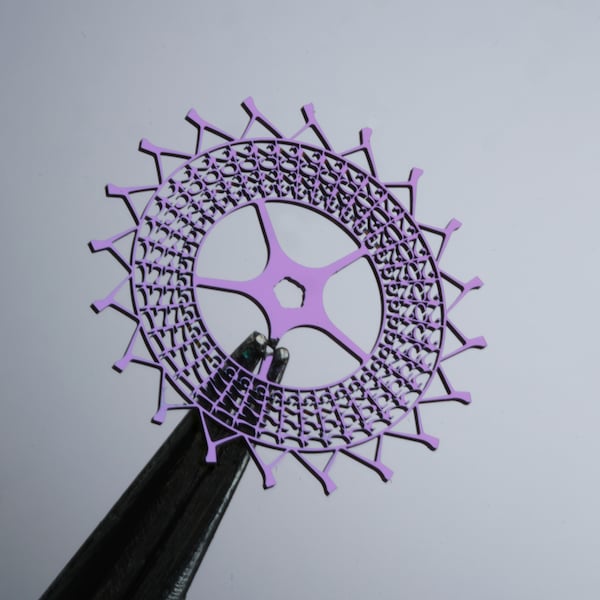
For the escape-wheel and pinion, Breguet has designed a phenakistoscope-type kinematic animation. In this model operating at a 10 Hz frequency, the rotation of this organ serves to display 20 images per second, enabling two inscriptions – in this instance “1775” and “2025” – to appear in turn, switching from one to the other in a smooth and fluid “morphing” effect. This is a first for Breguet.
Aesthetically speaking, the Classique 7225 echoes its predecessor’s characteristics and complications: central hours and minutes, fan-shaped power reserve at 6 o’clock (35 hours back in the day, now 60 hours), along with two small seconds subdials at 2 o’clock and 10 o’clock.
The presence of two small seconds displays is striking and they in fact serve the same chronometric purpose.
This is an invention by A.-L. Breguet already found on Reference 1176 from 1809. What sets them apart, however, is the counting system: unlike its predecessor, the Classique 7225 offers a “return-to-zero” system enabling the counter to be reset while instantly continuing the counting process.
The principle is simple. A “traditional” small seconds hand at 2 o’clock rotates continuously throughout the watch’s power reserve; whereas the 10 o’clock is occupied by an “observation” small seconds hand whose flyback function is activated by pressing the pusher located at 8 o’clock.
This additional function makes it possible to measure intermediate times or the duration of two simultaneous events, just like the timepiece invented by Breguet in 1820, which marked the origin of the modern chronograph.
Certified +/- 1 second, per day precision
This process is entirely in keeping with the spirit of A.-L. Breguet: devoid of any unnecessary complexity, simple to use, as well as substantially contributing to the fast, accurate and intuitive reading of the correct time. In 1809, it was also a means of demonstrating the chronometric superiority of his constant-force tourbillon.
In 2025, this is still the case with High Frequency and its magnetic pivot: for its new Classique 7225, Manufacture Breguet certifies a maximum deviation in rate of +/- 1 second per day . The magnetic pivot is to the wristwatch what the tourbillon was to the pocket watch.
Like most of the timepieces unveiled as part of the Manufacture’s 250th anniversary, the watch is made of Breguet gold and features a new optimised lug design ensuring enhanced comfort on the wrist. The “Quai de l’Horloge” guilloché pattern adorns the dial and caseband, as well as the inter-horn space.
The Classique 7225 joins the current collection.
